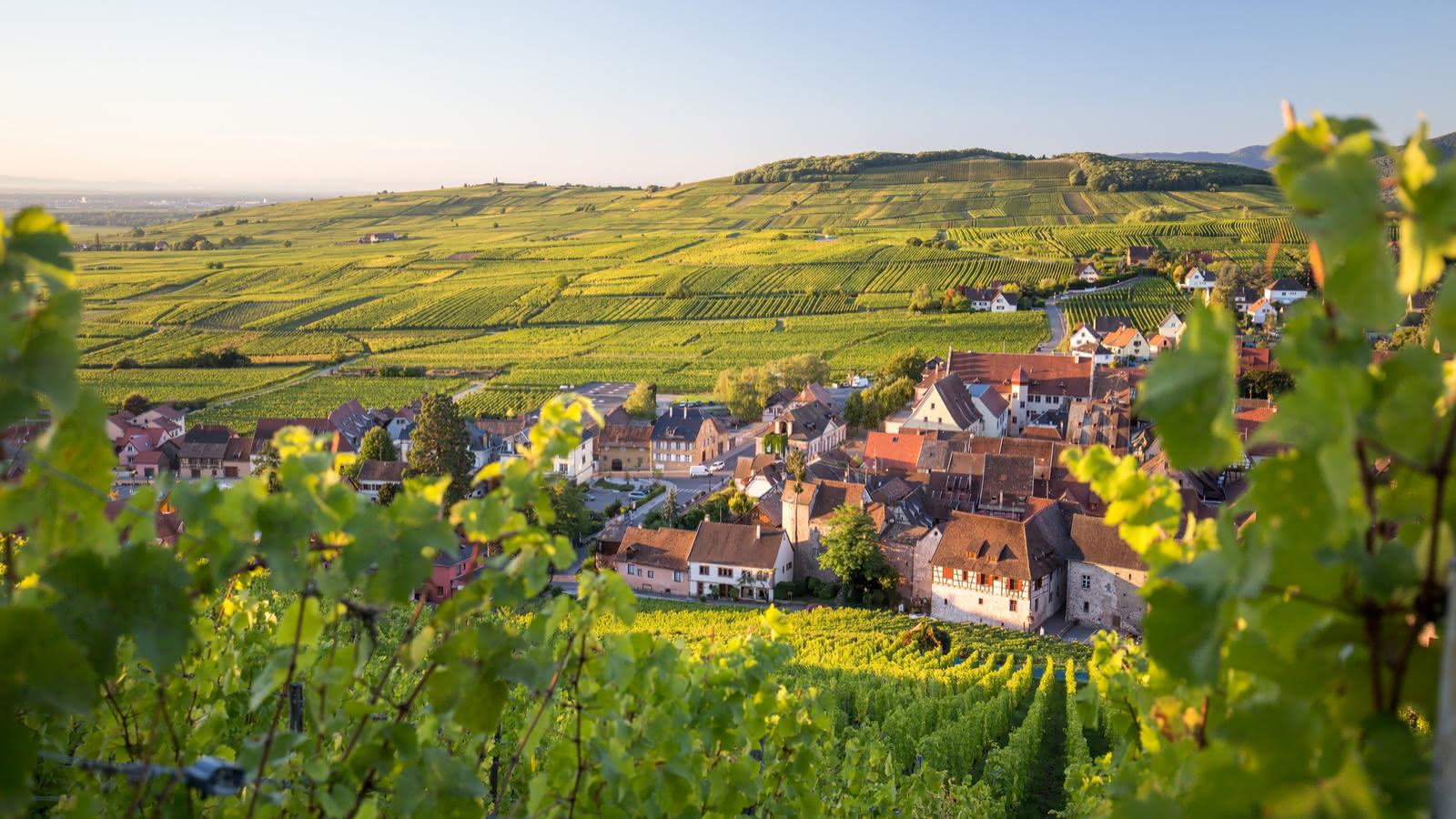
A week on the Alsace Wine Route
The Alsace Wine Route offers an enchanting journey covering 170 km from the north to the south of Alsace. Enjoy this legendary route at your own pace, wherever your wishes lead you.
- LengthOne week
- Means of transportBy car
- Distance172 km
Day 1: From Wissembourg to Cleebourg, you'll pass through Alsace's most northerly vineyards
A little detour to Northern Alsace for a first stop in Wissembourg. Located at the edge of the Northern Vosges Regional Nature Park, Wissembourg features a jewel of Gothic architecture: the Abbey Church of Saint Peter and Saint Paul, renowned for its cloister, monumental fresco and stained-glass windows.
Next, set off to discover the historic vineyards of Cleebourg, the first vines of which were planted in the 8th century. All the Alsatian grape varieties are represented there. You’ll be able to discover them as you make your way along the vineyard trail: Sylvaner, Pinot Blanc Auxerrois, Riesling, Pinot Noir, Pinot Gris, Muscat and Gewürztraminer. End your day in Hunspach, one of the “Most Beautiful Villages in France”, and fall in love with its gorgeous white and black half-timbered houses.
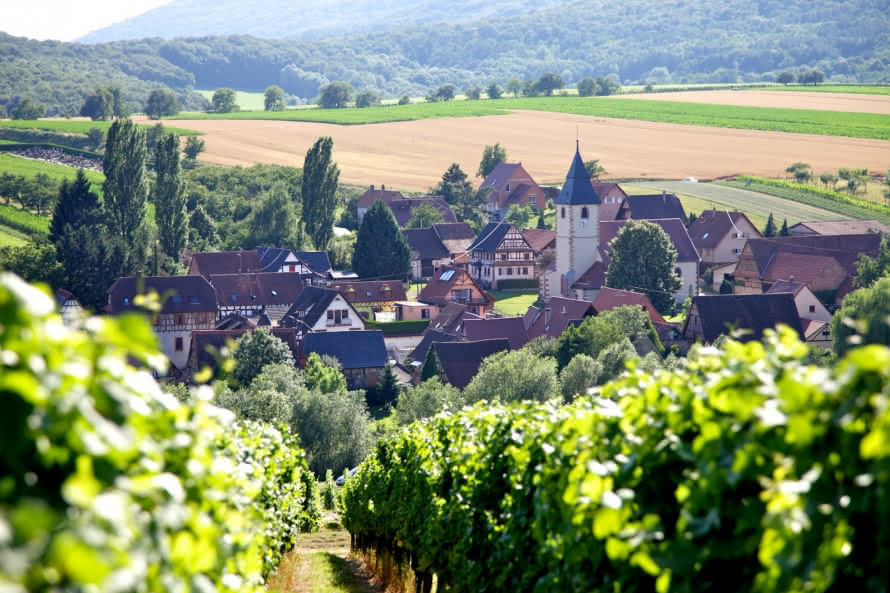
Day 2: Explore the Bacchus trails from Marlenheim to Obernai
Known for its white wines, Alsace also has a cherry-coloured grape variety, the Pinot Noir. Marlenheim, Saint Léonard and naturally Ottrott are some of the areas in Alsace in which it is traditionally grown. In Marlenheim, explore the Bacchus trails to soak up the sweetness of life that reigns there. Discover Molsheim, a town synonymous with Ettore Bugatti and his luxury vehicles: each year, a festival pays tribute to this legendary carmaker. A great way to end the day is with a stop in Rosheim. Admire its remarkable architectural heritage, including Saint Peter and Paul Church, a masterpiece of Romanesque art in Alsace.
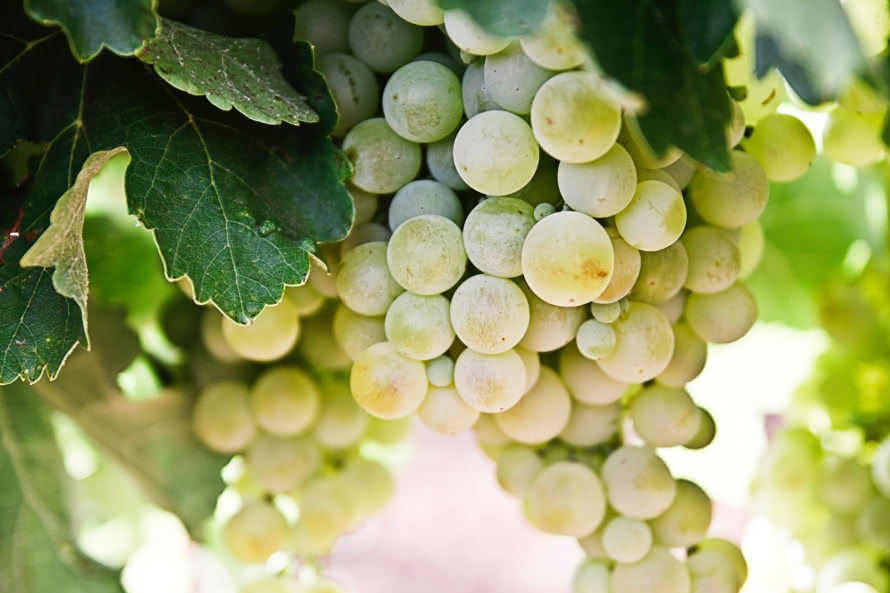
Day 3: From Obernai to Dambach-la-Ville, you'll find a number of superb wine-producing villages
Visit the charming town of Obernai, where you’ll be captivated by its bell tower, ramparts and medieval architecture. Make a stop in Barr, the winemaking capital of the Bas-Rhin. Nestling on the hillside, Mittelbergheim invites you to discover one of “Most Beautiful Villages in France”, while Andlau and its castle offer a journey back in time. Dambach-la Ville, a village situated among the vineyards, nicely rounds off this charming stage of the journey.
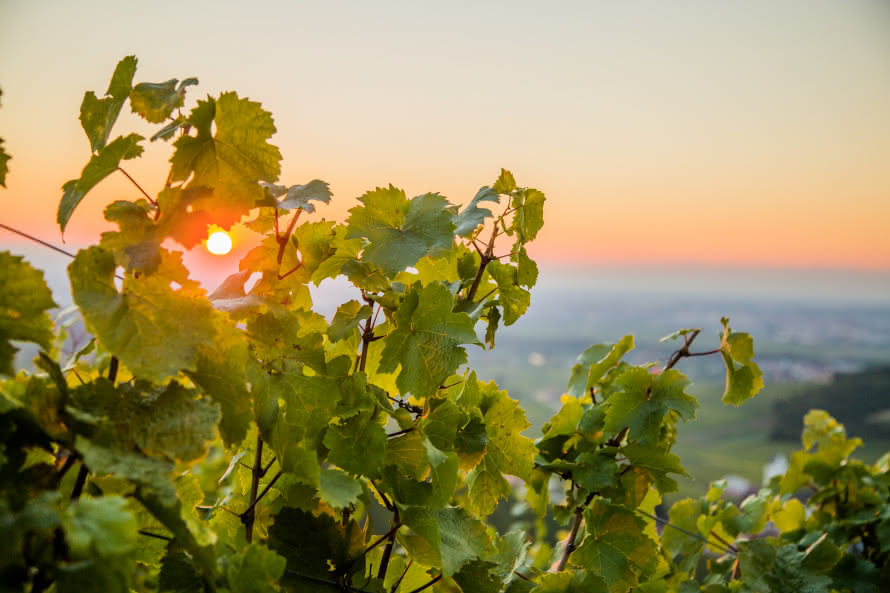
Day 4: From Dambach-la-Ville to Ribeauvillé, you can experience the gentle lifestyle of the region's wine producing villages
On this stretch of the Alsace Wine Route, the attractive wine-producing villages stand in the shadow of the castles overlooking them. The banks of the Aubach in Scherwiller, along which no fewer than 70 wash houses are located, are simply perfect for a stroll. During your travels, pick your favourite, from among the Tour des Sorcières in Châtenois or the Tour des Cigognes in Saint-Hippolyte. End the day with a visit to Bergheim, a town superbly decked out with flowers, before continuing on to the medieval town of Ribeauvillé, which each year hosts one of Alsace's oldest festivals: the "Pfifferdaj".
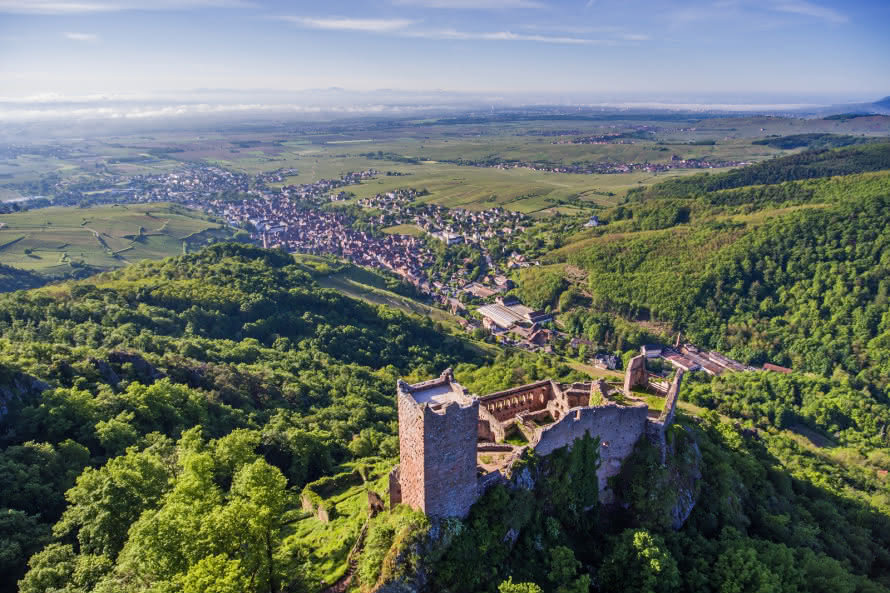 ©Tristan Vuano
©Tristan VuanoDay 5: From Ribeauvillé to Colmar, discover the treasures of the region's wine producing areas
Enjoy a leisurely start to your day in Ribeauvillé, by meandering through the charming, narrow medieval streets. If you’re feeling brave, climb up to the vestiges of the castles overlooking the city. Next, take the vineyard trail that joins Hunawihr, officially branded as one of the “Most Beautiful Villages in France”. Next, head for Riquewihr, with its picturesque houses and colourful façades that make for postcard-perfect scenery. Finish your excursion in Kaysersberg, a glowing jewel on the Alsace Wine Route. The village will surprise you with its medieval charm.
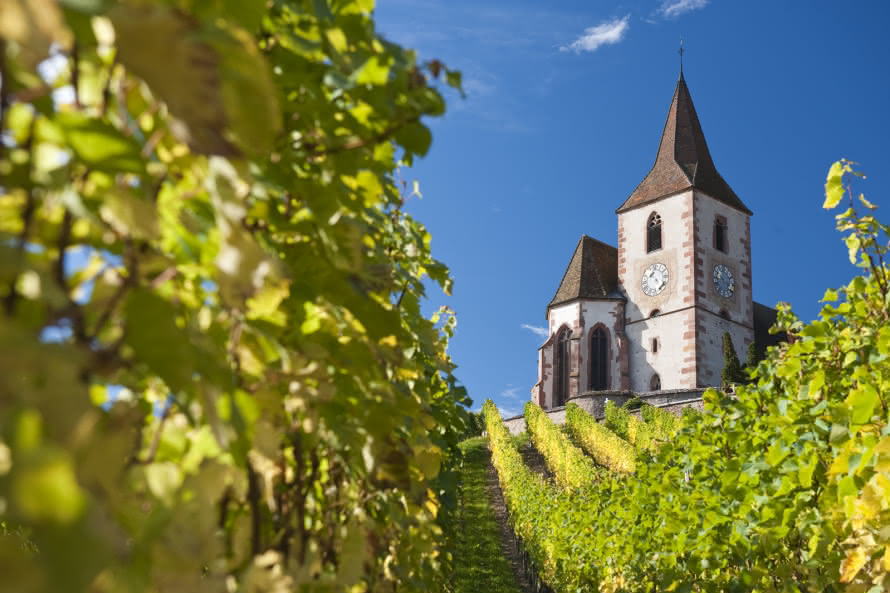
Day 6: From Colmar to Rouffach, you then make your way through a land dotted with vineyards and castles
Colmar, the Alsatian wine capital, is a crucial stop on your trip. Fall in love with Little Venice and its romantic canals, in addition to numerous architectural treasures, including the superb Saint Martin's Collegiate Church. Near Colmar, continue along the trail, which now weaves its way through the vineyards. Up high overlooking everything, the majestic Hohlandsbourg Castle, and the three castles at Eguisheim keep watch over the Alsace Wine Route. A number of traditional villages can be explored along the way: Niedermorschwihr, and its charming flower-laden streets, Eguisheim, with its famous wine festival and Turckheim, with its night-watchman tradition.
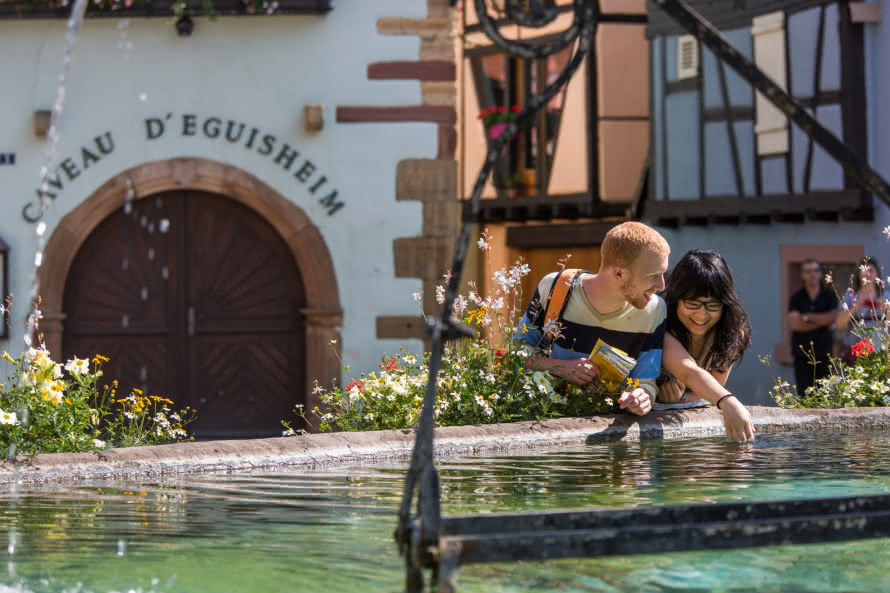
Day 7: From Rouffach to Thann, we now head along the South-Alsace Wine Route
Start your day off slowly in Rouffach, where you can experience the very heart and soul of the vineyard as you explore the “Grands Crus” trails or a variety of discovery trails. Continuing along the Alsace Wine Route, you can discover Soultzmatt, where you'll find a music hall in the heart of the vineyards, worthy of any of the great Parisian shows!
Next, set off to discover the vineyards of Guebwiller. It’s the only town in Alsace with 4 classified Grands Cru wines in its area. Your journey ends in Thann, where you can discover the Rangen, Alsace's most southerly vineyard, and the steepest, too.
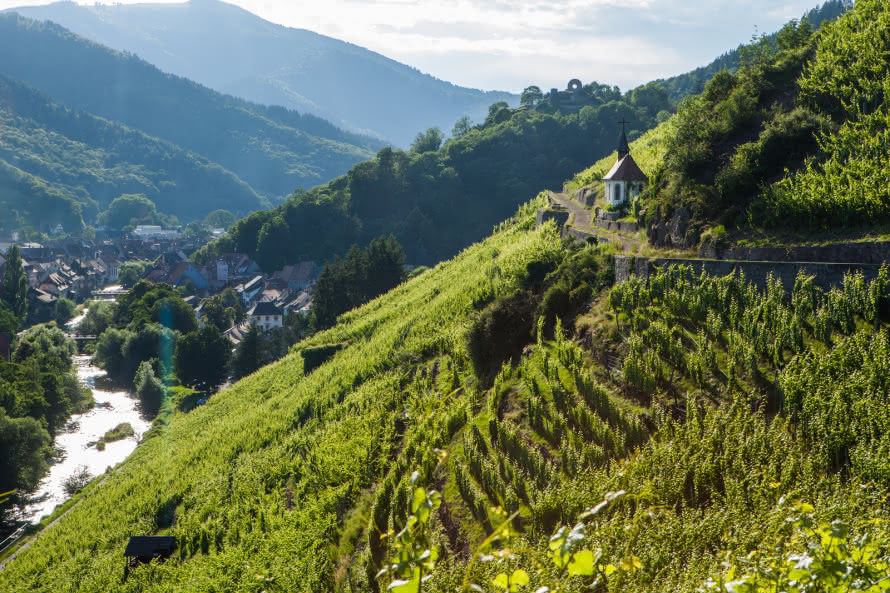
Leave us a rating - your recommendation is valuable..

